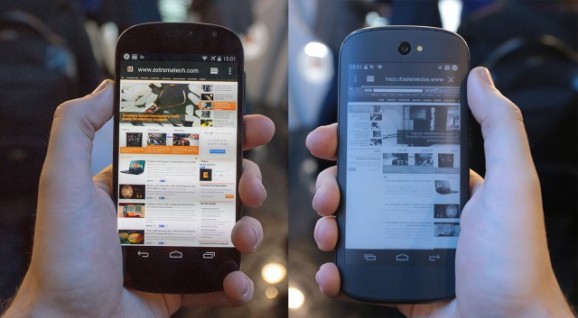New Battery Technology Coming For Smartphones
This article is more than 2 years old
 It’s happened to everyone — you’re lost and need to make a call or access the GPS function on your smartphone, except the damn thing is dead. Again. You just plugged it in the day before and hadn’t used it much since then; how could its juice be gone already? I’ve noticed a threshold for battery life — for the first few months, my phone or iPad or whatever holds a decent charge, but then there comes a point where that drops off rapidly, and I suddenly notice that everything drains it three times faster than it used to. Maybe it’s a ploy from the manufacturer to get us to buy replacement batteries, or maybe they just don’t really know how to make batteries last. But that may be changing.
It’s happened to everyone — you’re lost and need to make a call or access the GPS function on your smartphone, except the damn thing is dead. Again. You just plugged it in the day before and hadn’t used it much since then; how could its juice be gone already? I’ve noticed a threshold for battery life — for the first few months, my phone or iPad or whatever holds a decent charge, but then there comes a point where that drops off rapidly, and I suddenly notice that everything drains it three times faster than it used to. Maybe it’s a ploy from the manufacturer to get us to buy replacement batteries, or maybe they just don’t really know how to make batteries last. But that may be changing.
There are a couple of solutions in the works that might dramatically extend the life of a smartphone battery. One strategy is being developed by Eesha Khare, a Harvard student who invented an energy storage device that garnered her a top award at the Intel International Science and Engineering Fair. Khare’s storage device is a supercapacitor that can fully charge an LED in 20-30 seconds. The tiny nanotech, comprised of carbon fiber and metal oxides, can also maintain a charge for a lot longer. Her goal is to get the supercapacitor charging mobile devices in under a minute, which means Nyan Cats for all! Apparently she was recently approached by Google, so we’ll see how long she holds out.

The YotaPhone (Android) is another possibility (why isn’t it YodaPhone?) It looks like a standard smartphone, but has an e-ink display, which is what a Kindle uses, on the back. The e-ink screen can be used to do anything text-based, such as checking and responding to messages and notifications, thus preserving the main screen for videos and apps.
Even if the battery dies, the most recent information on the screen reader will remain visible, which is handy for maps and other information. The price is a bit steep ($600 – $700), but some claim that the battery can last up to 85 hours in flight mode and 50 hours in reading mode. While the current model hasn’t gotten stellar reviews, the YotaPhone 2 is on the way and appears to be an improved version of the first, though some remain skeptical about whether it actually has a chance in the US market.
Another innovation that may extend the life of your smartphone is wireless charging — and it doesn’t even require wireless electricity! Ossia Inc. is working on a project called Cota that can wirelessly recharge devices. Cota involves one power charger that can power any device within 30 feet. As long as a device is Cota-equipped, it will automatically remain charged and connected within 30 feet of the power supply — via smart antenna technology, that charger delivers energy to the specific devices. The only problem seems to be walls and spaces between the charger and the device, which can suck up a lot of that energy. Right now the power charger doesn’t transmit a whole ton of energy to begin with — not enough to keep a house full of devices charged — but Ossia is continuing to work on the technology. There will be no rest until humans figure out how to keep our devices charged forever!












